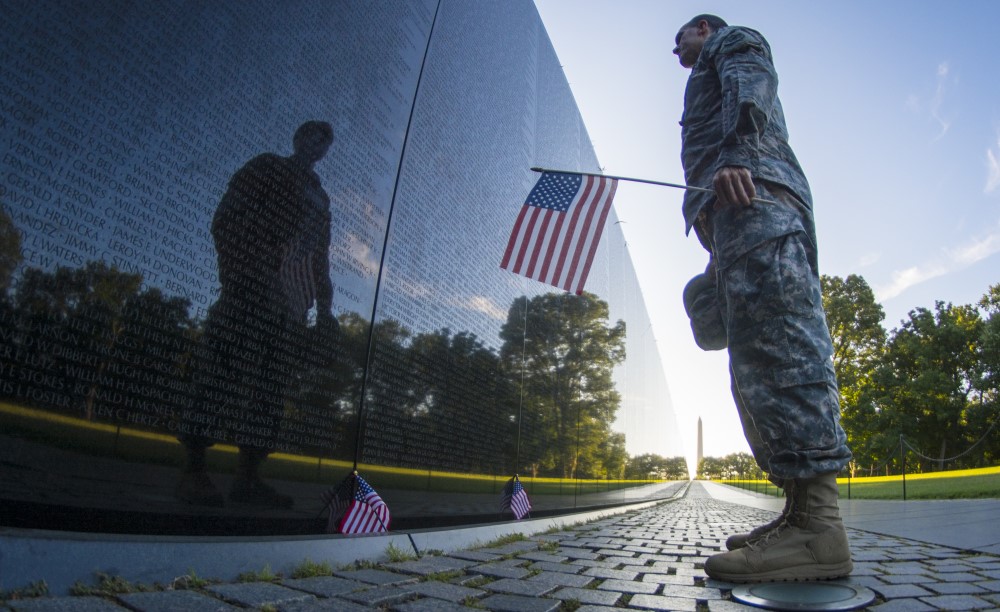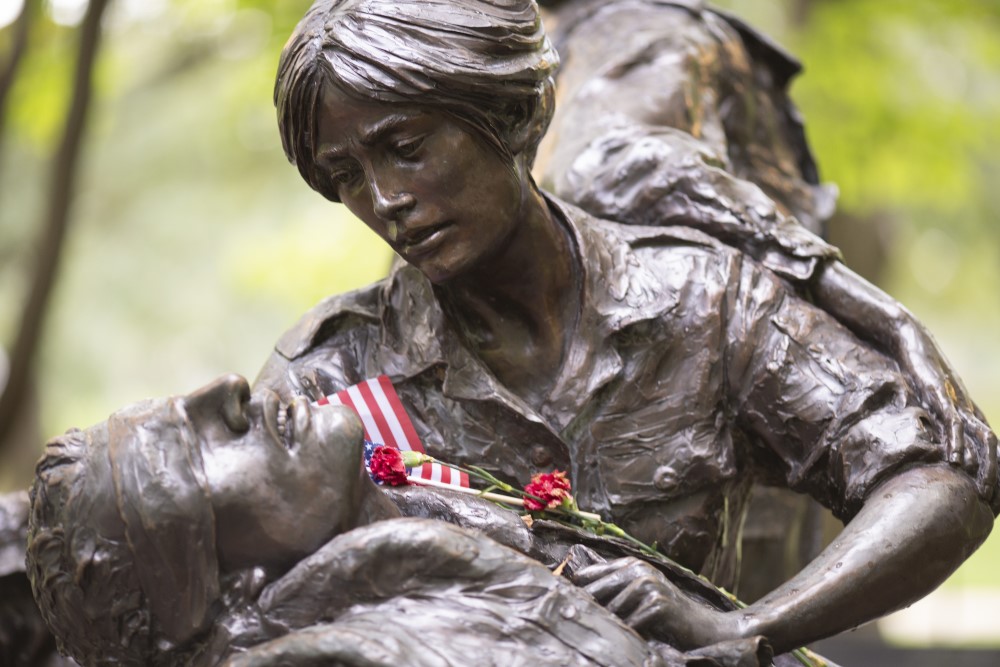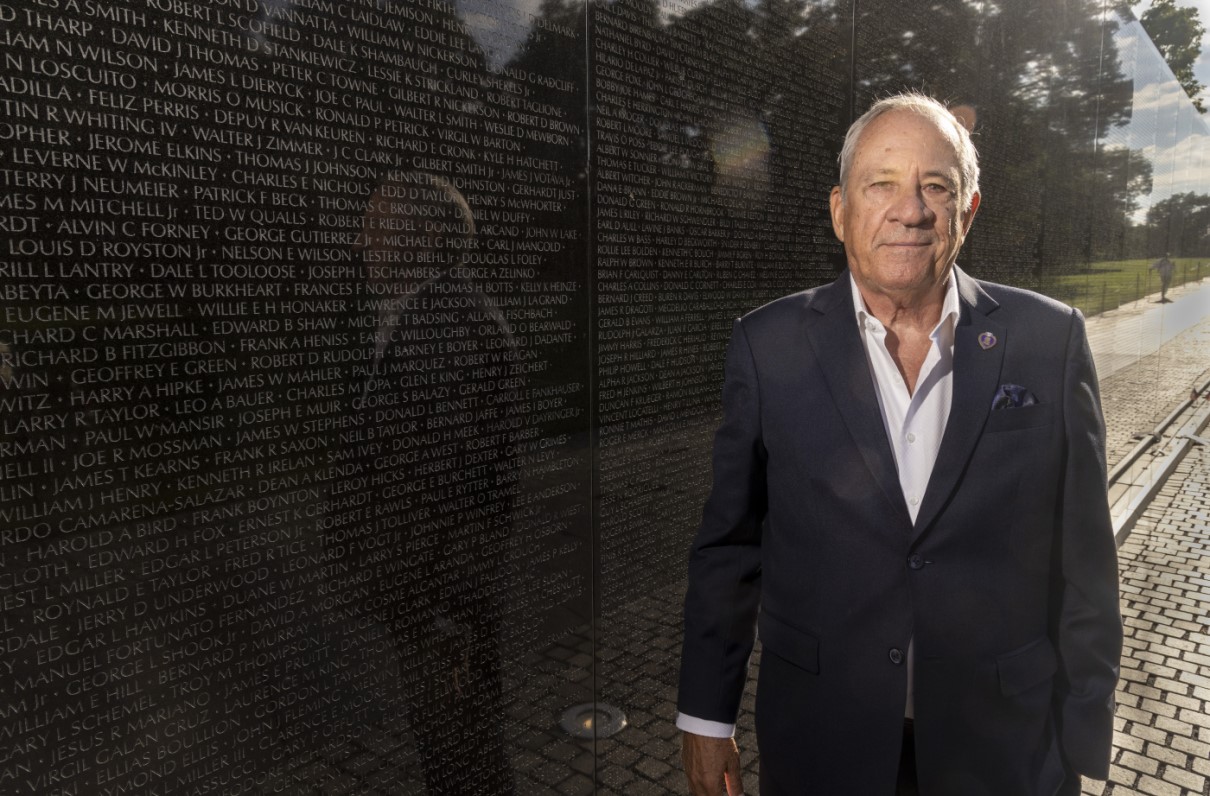(This article originally appeared in the November 2022 issue of Military Officer, a magazine available to all MOAA Premium and Life members. Learn more about the magazine here; learn more about joining MOAA here.)
It has been 40 years since the Vietnam Veterans Memorial was constructed on the National Mall in Washington, D.C. The dedication was held on Nov. 13, 1982. However, the gratitude the Wall elicited from Col. Pete Peterson Jr., USA (Ret), remains as powerful today as it was when he first laid eyes on it in the mid-1980s.
“It means a lot,” said Peterson, a MOAA member and Vietnam Veterans of America (VVA) board member. “When we came back, we were the little redheaded stepchildren. So when the monument popped up, I saw it as America’s way of saying we thank you for your service, we want to acknowledge that you didn’t create the war, nor did you lose it.”
Peterson was drafted in 1962, serving in special forces and artillery in his two stints in Vietnam. In his first tour of duty, he spent three months training the locals before being sent back seven years later after finishing Officer Candidate School.
During each tour of duty, Peterson saw someone die in front of him. Many of those memories came flooding back when he got his first look at the Vietnam Veterans Memorial.

A soldier reads some of the 58,307 names etched into "The Wall" of the Vietnam Veterans Memorial in Washington, D.C. (Photo by Sgt. Ken Scar/Army)
“I went down to the Wall, just me by myself, and it was quite an experience,” Peterson said. “I looked at things a little differently, and I was glad I was by myself because you unwind, you unravel. … You don’t realize how much of those pent-up emotions you have stored.”
Made of polished black granite, the Wall is inscribed with the names of the more than 58,000 servicemembers who lost their lives during the war, listed in chronological order by date of casualty.
Since the Wall’s 1982 dedication, four components have been added to the memorial site: the Three Servicemen statue, a flagpole, the Vietnam Women’s Memorial, and the In Memory plaque, honoring those who died after the war ended.
Fellow VVA board member Lt. Col. Sandie Wilson, USAR (Ret), who served as a nurse in Vietnam from 1968-69, said she could not get close to the memorial the first time she visited it.
“You think about what might have happened [to you] when you see all [the] names on the Wall,” said Wilson. “It becomes very emotional knowing that those were the people we could not save.”
Overcoming Obstacles
While his purpose for the memorial was to honor those who fought and died, Vietnam War veteran and Wall founder Jan Scruggs never dreamed the structure would elicit the response it still does four decades later. Even today, the former Army specialist 4 (E-4) often travels from his Maryland home to the memorial, paying his respects and informally educating tourists.
“I thought it would be a novelty for the first couple of years,” Scruggs said. “A place where maybe Rolling Thunder [on Memorial Day weekend] would come down to for five years and then it would fade away. But what I found after three or four years after the memorial was built, it was everywhere. It was always on the cover of magazines, Life magazine, Time magazine. The Wall became synonymous with the Vietnam War and with the memories of people there.”

The Vietnam Women’s Memorial was dedicated on Nov. 11, 1993. (Photo by Mike Morones/MOAA)
The idea of a memorial was conceived by Scruggs in the late 1970s. After a design competition, the jury selected the minimalist design of then 21-year-old Yale University senior Maya Lin.
But the memorial was never a sure thing as many powerful organizations and politicians opposed the idea right up to its construction date, said Scruggs.
“The Secretary of the Interior in March of 1982 had the construction permit, but he wouldn’t give it to me,” Scruggs said. “Thirty-two congressmen had called in within a period of 45 minutes and said do not give them the construction permit.”
However, with support from inside the White House, the Wall was constructed. According to Scruggs, former Army officer and then White House Fellow Tom Shull told the Department of the Interior not to hold up the permit despite its 11th-hour opposition.
[RELATED: Wall of Faces Now Includes Photos of All Servicemembers Killed in the Vietnam War]
“We took the permit, ordered bulldozers and heavy equipment, and I told the bulldozer guy, ‘just rip the Mall up,’ ” Scruggs said.
As a representative for the National Urban League’s Veterans Affairs Committee, Brig. Gen. George Price, USA (Ret), saw the conflicting opinions of the design of the Wall firsthand at a meeting on Capitol Hill in 1982. During the meeting, someone referred to the winning design as a “black wall of shame,” which upset the African-American veteran of the Korean and Vietnam wars. More than 7,000 African Americans died in the Vietnam War, according to the National Archives.
“That rubbed me the wrong way, so I made a statement [during the meeting] that there was nothing wrong with the color black,” said Price, a Vietnam Veterans Memorial Fund volunteer. “It is a color of honor. There was no reason to go on this tangent.”
A supporter of the wall design when it was still on paper, Price remains proud to be associated with the memorial to the fallen.
“I was fortunate to be a part of it, but the credit goes to Jan Scruggs and his volunteers,” Price said. “I got captured by the whole concept, and 40 years later we are still here.”
Support MOAA Charities
Donate to the MOAA Scholarship Fund and The MOAA Foundation at the link below.

